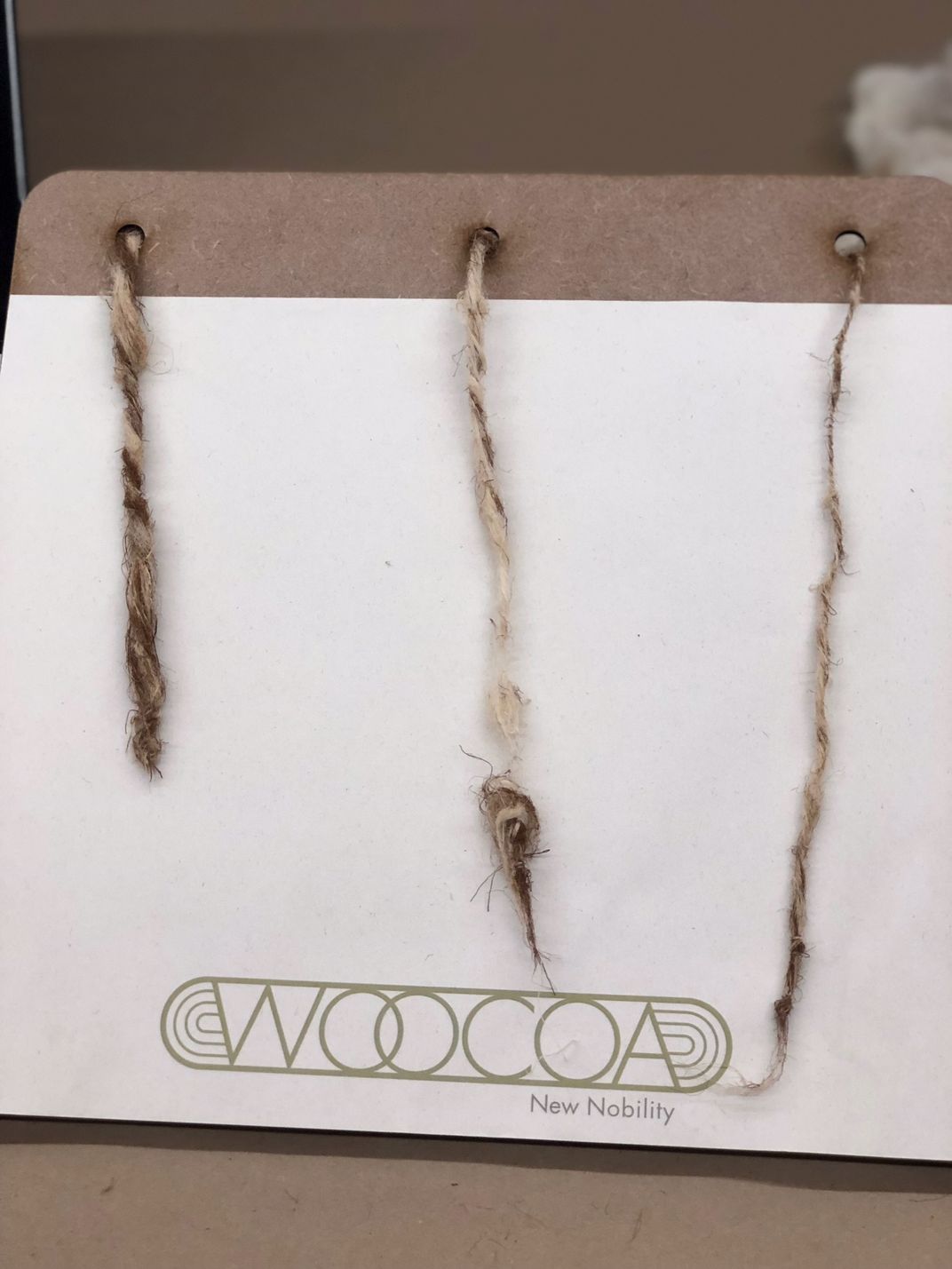What Will It Take to Make Vegan Wool?
A team of Colombian students has created a wool-like material from coconut fibers, hemp and mushroom enzymes
/https://tf-cmsv2-smithsonianmag-media.s3.amazonaws.com/filer/58/91/5891f182-1ba2-4231-8f60-146c9cf385a4/wool.jpg)
As a clothing material, wool has a lot going for it. It’s durable, warm yet breathable, easy to dye, and absorbs water without feeling clammy. But the process of obtaining the wool—factory farming and shearing sheep—can be inhumane. Animal rights organization PETA have released videos of sheep shearers kicking, cutting and throwing sheep as they attempt to shear as much wool as quickly as possible.
Scottish sheep farmers called the campaign "misleading and ridiculous," saying most farmers treat their animals well. And some animal rights campaigners say shoppers can avoid perpetuating animal mistreatment by only buying wool products certified cruelty-free by organizations like A Greener World.
But what if you could make wool without using sheep at all? That's what a group of Colombian students have done, devising a wool alternative made from hemp and coconut fibers treated with mushroom enzymes. Calling their product Woocoa, they hope it might make farming sheep for wool unnecessary.
The students, from the Universidad de los Andes in Bogotá, recently won a PETA-sponsored contest for the best “vegan wool," or wool-like material made from non-animal sources.
“The kind minds behind Woocoa came up with an eco-friendly, biofabricated material that will satisfy consumers and keep sheep from being shorn bloody for cruelly obtained wool,” said PETA Director of Corporate Affairs Anne Brainard, in a press release.
So how did hemp, coconut and mushrooms wind up becoming wool?
“In our research, we found out that in our country, Colombia, there are 114 different vegetable fibers that are used in artisanal crafts,” says Manuel Ortiz, a member of the Woocoa team. “Coconut fiber is an agricultural waste that could economically benefit communities in the Caribbean coast of Colombia. And hemp could be grown as a replacement of illegal crops on areas that were afflicted by the internal conflict with the rebel group FARC, which ended in 2016 with a peace treaty.”
But while coconut fiber and hemp met the requirements for sustainability, they did not feel at all like wool. So the team began experimenting with making the fibers softer. Consulting professors from the biology, chemical engineering and design departments of their university, they found they could use mushroom enzymes to degrade lignin, the organic polymers that make plant cells hard and rough. This made the coconut fiber and hemp much softer and more wool-like. It also removed their natural colors, priming the material for dying.
While the team still has a ways to go before the material has the exact properties they desire and scalability for commercial production, they think their proof of concept is an exciting start. The product certainly resembles wool, and can be stretched and woven in similar ways.
“You take out of the picture the animal, and you are giving back to nature instead of taking things away,” Ortiz says. “It’s an eco-friendly solution that generates job opportunities in Colombia and can help mitigate the environmental impact from the textile industry. But most importantly, we will have a future where no sheep is harmed to make a sweater anymore.”

In recent years, designers and clothing manufacturers have partnered with biotech to begin offering more animal-free alternatives: synthetic spider silk, artificial duck and goose down, high-tech faux fur, and vegan leather derived from everything from pineapples to winemaking waste. But there is currently no alternative wool on the market.
The PETA Prize for Animal-Free Wool was sponsored by PETA, British designer Stella McCartney and Stray Dog Capital. It’s part of the annual Biodesign Challenge, which partners design students with biotech professionals to innovate in the biotechnology arena—past winners have included a project that used earthworms to clean up soil contaminated by mining, and a yarn made from algae. When determining this year's winner, the judges took into account the material's lifecycle, production processes, disposal, and recyclability, as well as its scalability.
As the winning team, Ortiz and his colleagues Moises Hernandez, Ivan Caballero and Ana Andrade get a one- to two-week work experience at Stella McCartney’s London headquarters.
For other approaches to vegan wool, look at the contest's two runners-up. Kerasynth, from the Maryland Institute College of Art, is a vegan “skin” with wool-producing follicles. The researchers behind it hope their process can one day grow hairs from many different animals, not just sheep, as well as produce colored wool in an array of fantastical tones. Werewool, from New York’s Fashion Institute of Technology, is a faux wool fiber that students created by isolating and expressing a protein from their own DNA—no animals (except humans) needed.
/https://tf-cmsv2-smithsonianmag-media.s3.amazonaws.com/accounts/headshot/matchar.png)


/https://tf-cmsv2-smithsonianmag-media.s3.amazonaws.com/accounts/headshot/matchar.png)